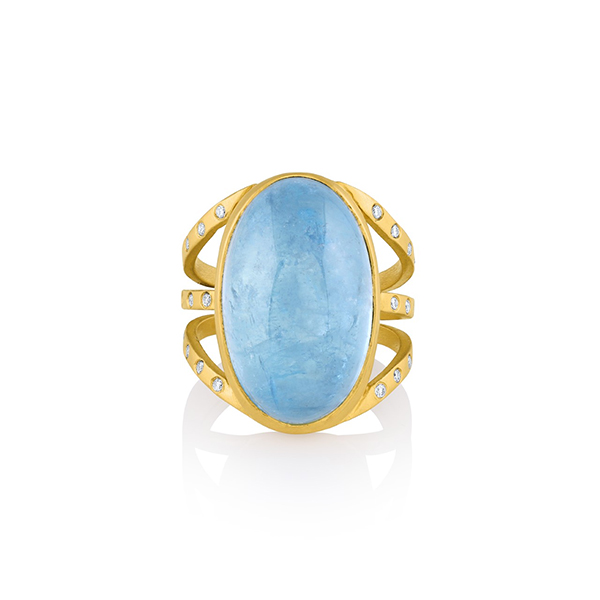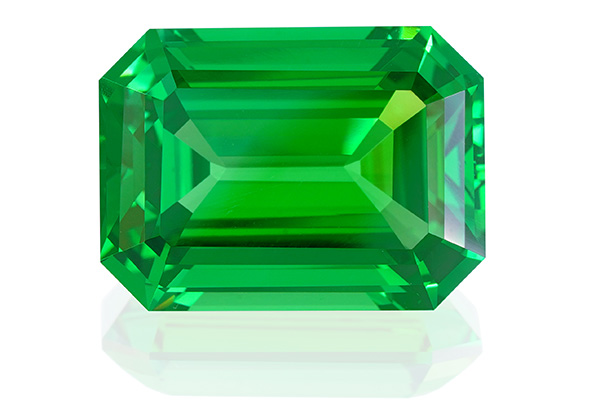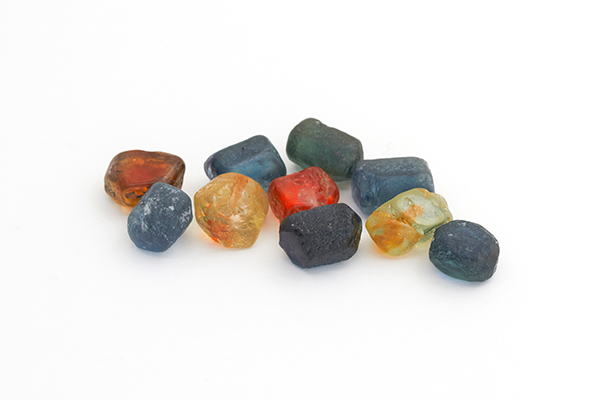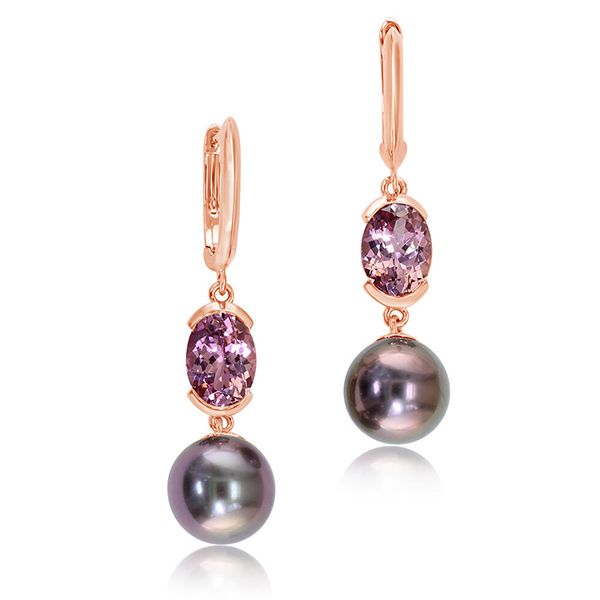
It’s that time of year again. The Tucson gem shows are kicking off at the end of this month, which means that, once again, we’ve tapped Stuart Robertson, president of Gemworld International Inc., for his insights into gemstone prices, supplies, and demand circa 2024.

Robertson’s outlook is decidedly mixed. “The political environment, not just in the U.S. but all over the world, is sucking the oxygen out of the room,” he tells JCK. “People get nervous and start to think about their expenditures. Are people going to be in hibernation because they’re sitting on their sofas watching the news all night?”
Despite his less-than-stellar expectations for the jewelry business this year, Robertson highlighted a few stones that are poised to perform well in 2024. Below, he offers his take on why prices remain high at the top end, which gems are sure things, and why the pearl market is still in a frenzy. (The conversation has been condensed and edited for clarity.)
What are you hearing from retailers about the 2023 holiday?
It was a mixed bag for a lot of people. Our impression is that independent jewelers in neighborhoods tended to do better than the bigger chains in mall stores. Part of that is loyalty in communities.
But a lot of people told us their actual season wasn’t as strong as they’d hoped for. Things really slowed down in the last quarter, but you have to put that in context. We’re coming off a few years of pretty strong gains so the idea that the market was going to continue to go up didn’t make any sense. We’re in the final stage of transition back to post-pandemic normalcy, and even with the kind of anemic-looking economic data we’re seeing on certain fronts—prices for goods are still high, credit card debt is higher, and interest rates are certainly higher—people still spent, but they transitioned back to things they didn’t spend heavily on in 2020–2021, or even 2022, like travel, vacations, eating out.
And this was predicted. Eventually, we knew the market would see a slowdown not because of people moving away from jewelry, but because they were returning to a sense of normalcy. So the market is just going back to what it was in 2019. We’re competing with sectors we haven’t competed with for years. You see it in airport delays, overbooked cruise lines—a rush to spend money elsewhere.
The reason I point that out is that’s how we’re seeing it. Others have interpreted it as a turn away from jewelry. No, it’s not. We’re just competing back with the broader market again.
What does that spell for the Tucson gem shows?
That’s the big unknown for us. We are not convinced it’s going to be a strong show. It’s going to be an okay show. When we talk to people, only 50 percent of the people we normally expect to see there are going. And that’s mostly within the retail community. We’ve had a number of people tell us they’ll pass this year. I don’t think the attendance is going to be great. I do think it’ll be a decent show, all in all, but not as busy as some have been in recent years.
Talk to us about prices heading into the shows.
We’ve seen some price corrections here and there, but the finer material is finding support at price levels that increased dramatically during the pandemic—because production still hasn’t caught up. That’s because when there weren’t buyers, people were forced to leave the mines and find other work, and they still haven’t come back to the gem trade. Also, we’ve exploited a lot of deposits—there are not a whole lot of new things.

Support for prices on the high-end exists because demand is still greater than the current rate of production—and that’s across a pretty broad spectrum of stones. We’re seeing high prices on tourmalines, and a lot of the garnets. And there isn’t much to indicate that’s going to change anytime soon, for the top tier. The mid and lower tier—yeah, that’s coming down.
This is a year where if you’re in the market for finer color—if that’s your client base—then the time to buy will be in Tucson, because there’s nothing to indicate a correction is coming. High interest rates don’t affect consumers who buy at the top end, they only affect people who buy at the lower to mid-tier. If you’re in the market for a $50,000 to $100,000 sapphire, you’re not really worried about a credit card interest rate. At the top end of the market, higher-end Paraiba tourmalines, alexandrites, blue sapphires, rubies, emeralds, even some of the garnets like tsavorite—at the high-end, those prices are immune from the current economic conditions.
Do you expect any specific stones or varieties to attract buzz this year?
I think we’re going to see some of the same trends we’ve seen in the last few years. This year I think a lot of people are going to look for Montana sapphire. It’s been popular for a few years, but this year Columbia Gem House has gotten into it in a big way—and they know how to market it. They’ve been playing around with the cutting and some of the enhancement process, and keeping some of the material unheated. They’ll probably be pretty busy with that type of material.

In general, the American-produced stones are probably going to be popular again—they have been popular with smaller jewelers and independent designers because it’s an area that’s a niche. You can market the origin as a domestic source and that clears up a lot of sourcing issues that have been dominating the discussion for the last few years.
The folks at the Cruzeiro mine in Brazil, a family-owned mine for a number of generations—they’ve produced emerald and tourmaline for a while. It’s not new as far as a source goes, but they’ve changed their focus and they’re making sure their production is at a sustainable level. They’re working with cutters and selling rough. They have their own booth at GJX. That’s another source-driven area of interest.
We think aquamarine is going to be an interesting stone to watch. There’s still a fair amount of production, but it’s expensive. We’re seeing more people interested in aqua and that’s protecting the price structure. One of the ironies is that aqua is probably more expensive than rubellite, yet there are a lot more deposits of aqua. It goes back a way long time. It’s a birthstone. It’s been featured by a number of designers. It’s a blue that doesn’t get anywhere near the price points of some of the lighter blues like Paraiba.
What about the pearl market, which saw a dramatic increase in pricing last year?
Prices on the better-end South Sea, Tahitian, and akoya have been pushed up to high levels, but it’s not just because of demand in the Chinese market. The pearl industry was most susceptible to the mass disruptions during the pandemic because a lot of operations had to shut down.
Think about in the context of aquamarine. If were mining aqua and had to stop, the aquas are still in the ground. But if you’re culturing pearls, you have to tend to your production in the water, extract the pearls, and then keep that process going. Only Paspaley was able to get around it; they were only ones able to continue that operation. And it takes several years to get pearls.
Because of Covid, the pearl industry lost production and couldn’t immediately pick up where they left off. The cycle now has to play out over the next four to five years. There’s going to be less production and more demand, so prices will at the very least stay stable. It’s a matter of disruptions hitting the pearl market.

Origin seems to be a big issue in the diamond trade, but correct me if I’m wrong—it doesn’t seem like the colored stone community is doing anything about it?
There are different types of wholesalers: people who go to the source and buy, and people who buy from people who say they go to the source. And most are in the latter camp. Origin reports from the labs are not huge helps. We’ve seen multiple instances of the same stone getting multiple reports. We’re at a point where if you have a fine quality stone, you’ll need three to four reports before it can sell at its full price potential. If it’s a really fine stone and you’re only being shown one report, you’ve got to wonder what the other reports would have said, and that’s a problem.
We ought to take Dick Hughes’ advice and go back to buying and selling on the beauty of the stones. The over-reliance on reports is problematic.
Last question: What do you do for fun in Tucson?
I got involved with the National Association of Jewelry Appraisers. I start my week with them. I even became the conference chair. That is the relaxation and networking chance I get before the show starts.
When the show stars, we’re either at Pueblo, GJX, or AGTA. And every night, there’s something we are expected to go to and network at. There isn’t the time that we used to have before Tucson got so big that even the evenings are occupied.
I used to like to go out and visit the old missions that are half an hour outside of Tucson, 100-year-old buildings in areas that hardly anyone lives in anymore. I used to enjoy just walking around. But now the shows have gotten so big and so busy, there’s not a lot to do other than show stuff. We always stay at the university campus and end up at one of the student hangouts, having beers and going over what we’ve seen and heard during the course of the week. And that’s about the highlight.
Top: Neread ring in 22k gold with aquamarine and diamonds, $13,800; Dale Hernsdorf
Follow JCK on Instagram: @jckmagazineFollow JCK on Twitter: @jckmagazine
Follow JCK on Facebook: @jckmagazine






